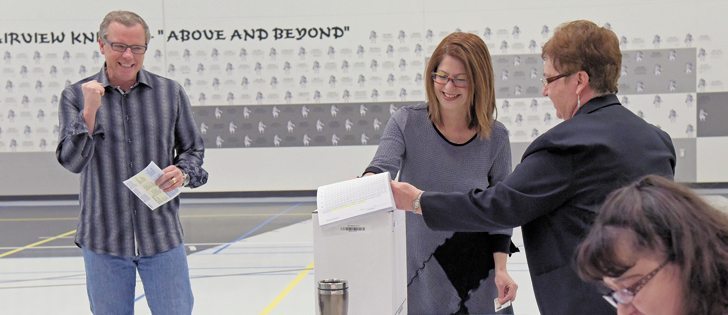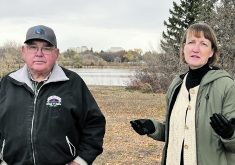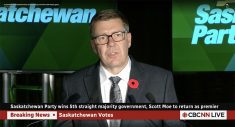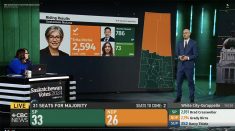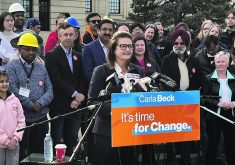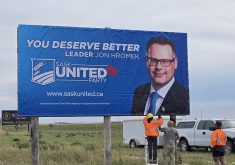Due to deadlines for this issue, final results were not available at press time.
Farmers say the re-elected Saskatchewan Party government must now work with the federal Liberals to develop strong agricultural policy.
As expected through the ho-hum 27-day campaign and from polls that didn’t significantly change, the Saskatchewan Party was re-elected to its third consecutive majority government April 4. At press time, the party was elected or leading in 48 of 61 seats.
Premier Brad Wall easily won his Swift Current constituency. NDP leader Cam Broten was in a tight race for his Saskatoon Westview seat.
Read Also

Manitoba community projects get support from HyLife
HyLife Fun Days 2025 donated $35,000 each to recreation and housing projects in Killarney, Steinach and Neepawa earlier this fall.
Wall made no agricultural campaign promises but during the next few years Growing Forward 3 will be implemented, and thorny issues such as a national carbon tax are expected to be sorted out.
A review of the current agricultural policy framework is expected to be complete by the July meeting of federal, provincial and territorial agriculture ministers, leading to work on GF3.
The province’s most recent agriculture minister, Lyle Stewart, re-elected in a new constituency of Lumsden-Morse, wasn’t happy about changes made to business risk management programs in Growing Forward 2 that saved governments money but lacked the income safety net that farmers wanted.
Wall has staunchly opposed a carbon tax.
Norm Hall, president of the Agricultural Producers Association of Saskatchewan, said both governments have to do what’s best for producers.
“We will be lobbying both provincially here through APAS and federally through (Canadian Federation of Agriculture) to ensure there’s a good relationship and that the programs are farmer friendly as opposed to government friendly,” he said.
APAS has recently surveyed its members on business risk management programs and results are expected soon.
Doug Gillespie, president of the Saskatchewan Stock Growers Association, said his industry would like to see livestock price insurance as a permanent part of the business risk management program. It is currently a pilot in Western Canada.
He said the cattle industry would also like to see the two governments work together to streamline regulations and expand trade.
Provincially, Gillespie commends the returning government for continuing to improve infrastructure such as highways.
“I would hope that they maintain the direction they’re going,” he said.
He is encouraged by the recently announced improvements to forage insurance and said his organization would continue to push for an assurance fund to protect producers when selling cattle, and changes to the horned cattle fund.
Glaslyn area farmer Daryl Fransoo said he will be watching for action on grain transportation and inaction, from Ottawa, on a carbon tax.
“The Sask. Party has done a great job saying no carbon tax,” Fransoo said. “We’ve got to make the feds realize that we’re actually a carbon sink in agriculture and that we should be recognized as such if they do implement a carbon tax.”
Fixing grain transportation concerns is a matter of determining proper and balanced regulations to help farmers and railways at the same time, Fransoo said.
“We’ve got to start with keeping inter-switching alive (allowing a railway to run on a competitor’s tracks) for right now until we can figure out how we can get a more competitive market. We’ve got to modernize the maximum revenue entitlement so it benefits the farmers but at the same time incentivizes rail to move our grain and spend money on infrastructure for grain handling.”
Both Fransoo and Hall also said governments must do more to encourage young farmers.
“We already lost a lot of the generation above me. If we lose the generation below me who’s going to take over the farm?” said the 30-year-old Fransoo.
Contact Karen.briere@producer.com


